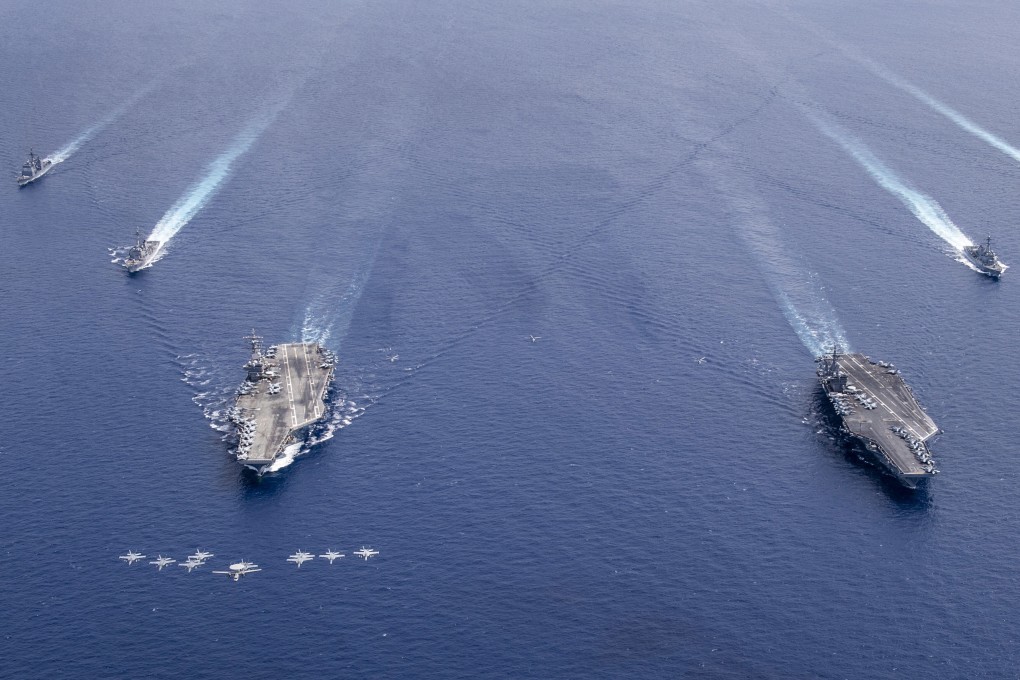Advertisement
US-China tension: Pentagon’s 2021 maritime strategy has Beijing’s South China Sea activities in its sights
- Document sets objectives for the US Navy, Marines and Coast Guard, saying hopes had faded that China and Russia would become responsible leaders
- American naval forces expected to be more visible in the Pacific and will ‘detect and document our rivals’ actions’
Reading Time:2 minutes
Why you can trust SCMP
94

The US military warned it would be “more assertive” against Beijing, saying China was the only rival presenting a long-term challenge to the United States.
In a document setting objectives for the United States Navy, Marines and Coast Guard for 2021, the Pentagon said China was adopting an expansionist approach in the South China Sea and seeking to establish regional hegemony through programmes such as the Belt and Road Initiative.
Russia also posed a threat to the US military, the document said, but it added, “China is the only rival with the combined economic and military potential to present a long-term, comprehensive challenge to the United States”.
Advertisement
“Naval service operations and force posture will focus on countering PRC malign behaviour globally and strengthening regional deterrence in the Indo-Pacific region,” it said, referring to the People’s Republic of China.
It added that any optimism that China and Russia might become responsible leaders had given way to recognition that they were determined rivals, and that China represented the most pressing and long-term strategic threat.
Advertisement
Advertisement
Select Voice
Choose your listening speed
Get through articles 2x faster
1.25x
250 WPM
Slow
Average
Fast
1.25x